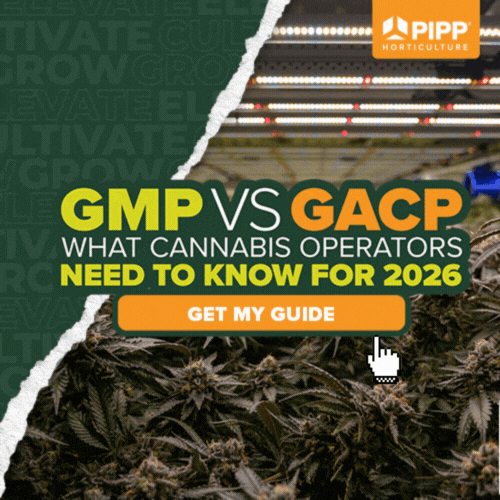
As the cannabis industry continues to evolve, businesses can fall into peril for many reasons, from compliance with ever-changing regulations to increased competition and plummeting market prices. Left unresolved, these issues can drive companies to merge or get acquired in order to survive in an increasingly challenging marketplace.
Here, Sabas Carrillo, founder, managing partner and CEO of Adnant Consulting, a Los Angeles-based accounting and consulting firm, outlines five common disruption and extinction events that are driving M&A deals in the cannabis space.
1. Changing Regulations and Licensing
Regulation rollout and permitting continue to disrupt the cannabis market and cause companies to fail, Carrillo says. In states where a gray market transitions into a regulated industry, such as California, cannabis businesses must obtain licenses when rules go into effect, which puts a strain on operators even now, more than a year after California’s legal adult-use market launched in January 2018.
“That caused a bunch of people to scramble,” Carrillo says. “Some people went out of business, and a lot of people really, really struggled. Right now, what we’re seeing is that this is a topic of conversation amongst a lot of small- and medium-sized companies that are kind of hanging on by a thread.”
In 2018, California’s cannabis business owners put a heavy focus on compliance with the new regulations, which led to increased operating costs as they hired additional staff, such as compliance officers and team members dedicated to tracking licensing applications and renewals. Licensed businesses also had to start paying taxes, all while still competing with unlicensed companies that maintained lower operating costs.
In addition, some companies in California that have been operating with temporary licenses have simply been denied permanent annual licensure. “That’s … [a] wake up call, and that’s really scary,” Carrillo says.
In West Hollywood, for example, Adnant has seen many dispensaries spend several million dollars building out storefronts, only to later learn that they were not going to receive permits.
“I think some of those companies that are already hanging by a thread are about to collapse,” Carrillo says. “That’s going to force them to try to go do some deals to sell themselves, to merge with other companies and other partners, or to do something.”
2. Falling Market Prices
Rapidly declining wholesale cannabis prices are also causing some companies to look to M&A deals as an exit strategy, Carrillo says.
“Market prices are all over the place,” he says. “Specifically, market prices are starting to come down as greater efficiencies and innovation come into the industry.”
As new extraction technology comes online, for example, the cost of extraction is decreasing.
“A year ago, having a machine that would do 100 pounds a day was huge,” Carrillo says. “Then we started seeing machines that could do 1,000 pounds a day. Now we’re seeing machines that can do 10,000 pounds a day and that are also constant feed systems. So, … there are companies that had at least a one-year agreement for pricing around their oil, and if they don’t have this innovation, … for example, all of a sudden they’re scrambling because they have these other competitors that are offering oil at a lot cheaper rates, and they’re scrambling to re-negotiate with their buyers in order to survive.”
3. Increased Competition
While 2017 and 2018 saw a flood of money from investors coming into the industry, 2019 will likely see more entrepreneurs enter the market, according to Carrillo.
“I see mom-and-pop wine makers wanting to get into the business because they’re like, ‘Well, I already own 10 acres and … processing equipment. I already have this know-how and it’s not that hard to come into this industry,’” he says. “We’re hitting a milestone in terms of the industry becoming a little more mainstream. More entrepreneurs are coming into the industry, and that’s different than just money coming into the industry.”
As more businesses pop up, competition becomes fierce, and market consolidation increases.
4. Running Out of Capital
Adnant has seen more and more businesses that are simply running out of capital, Carrillo says, and many are looking to merge or get acquired in order to survive.
“They got a few investments in the last couple years, deployed their business plans, chugging away, doing their best to comply, doing their best to get traction, and now we’re seeing these companies running out of cash and scrambling to figure out what they’re going to do, whether that is selling their company and their assets or selling their license, for example—whether it’s merging or getting acquired,” Carrillo says.
5. Other M&A Deals Falling Apart
“We’re also seeing a lot of partnerships and mergers and acquisitions that have been in the works for a while fall apart,” Carrillo says. “Some of it is how quickly things are changing.”
When one company acquires another, there is always a perceived value of the company that is being acquired, which is based on the team, the IP, the brand, specific knowledge or a desirable permit or license, for example. But as the industry matures and evolves, that perceived value can change very quickly, Carrillo says, as companies innovate.
“Let’s say I’m [purchasing a company that’s] going to process maybe 500 pounds a day, and I thought, ‘Hey, at this point in time, this is really good for my company,’” he says. “And while I’m in the due diligence process, I meet somebody else who says, ‘Yeah, we can do 2,000 pounds a day, no problem.’ Well, that causes the deal to fall apart because maybe I go back and I try to renegotiate the price, or maybe I just don’t want to acquire that technology.”
In other instances, if a company is looking to acquire a dispensary, for example, it may discover that the retailer has a temporary permit, but that it is not in line to get an annual permit, or it is not able to renew its annual permit.
Due diligence and long negotiation processes can also cause deals to deteriorate. “I think that a lot of companies are getting smarter about who they acquire or who they merge with,” Carrillo says. “As a result, due diligence processes are taking longer when people are doing their homework a little bit better, a little bit deeper. Sometimes, by just virtue of … how long it takes to negotiate, deals fall apart [because] they find something out.”
Or, he says, they find something better.
“There are only so many deals that any company can entertain, and if people sit on a deal too long or maybe they feel that, ‘Hey, I can probably get a better deal with a better buyer, let me wait and see if a better buyer comes along,’” Carrillo says. “[Then] boom—deal falls apart."

























